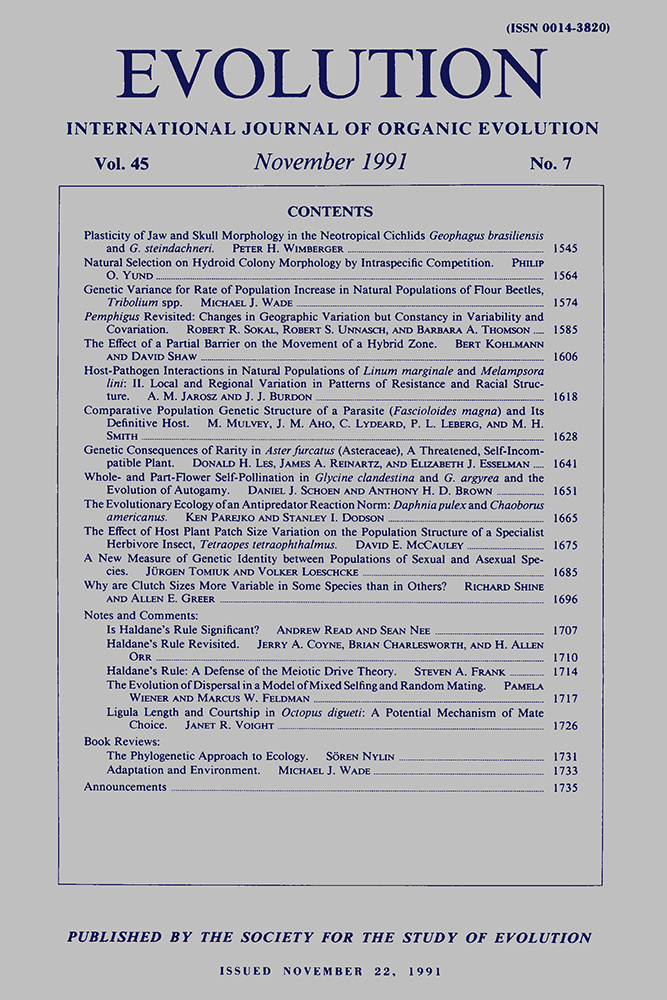NATURAL SELECTION ON HYDROID COLONY MORPHOLOGY BY INTRASPECIFIC COMPETITION
Abstract
Previous work on colonial hydroids in the genus Hydractinia has demonstrated that colony morphology is highly variable and determines intraspecific competitive ability. Competitive encounters are known to be common in nature, suggesting that intraspecific competition may be a major selective force acting on morphological variation. A replicated common garden experiment demonstrated a genetic basis to morphological variation and two data sets provided correlative support for the hypothesis of selection by intraspecific competition. First, morphologies inferior in competitive ability were less abundant in two adult, postcompetition, samples than in juvenile, precompetition, samples from the same populations. Second, among eight populations, the relative frequency of different morphologies was correlated with the frequency of intraspecific competition observed in each population. The direction of selection by competition on the morphological variation present in this species conflicts with recent predictions based on surveys across diverse taxa, suggesting limitations to the inference of competition as a past selective agent on the basis of present day correlations among species.




